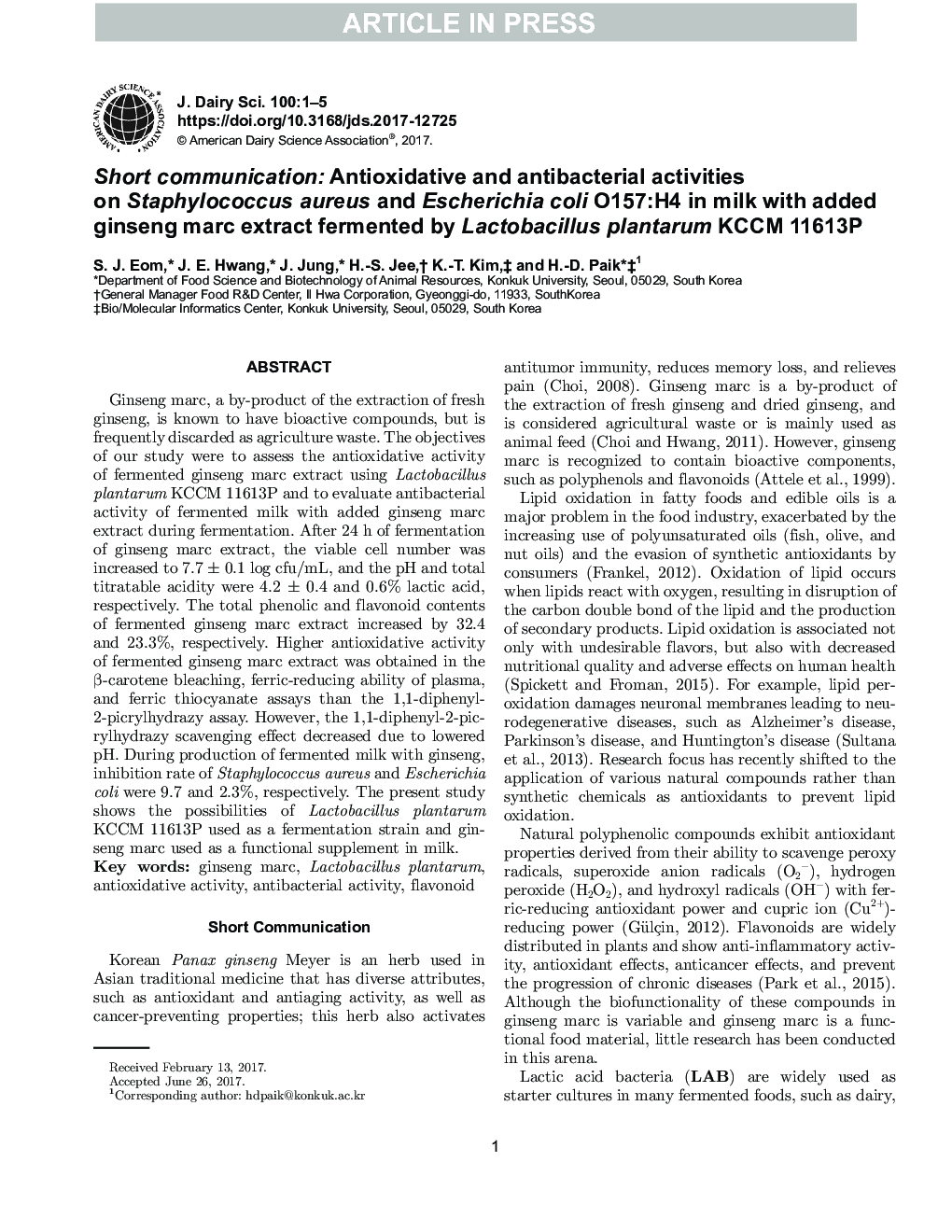| Article ID | Journal | Published Year | Pages | File Type |
|---|---|---|---|---|
| 5541968 | Journal of Dairy Science | 2017 | 5 Pages |
Abstract
Ginseng marc, a by-product of the extraction of fresh ginseng, is known to have bioactive compounds, but is frequently discarded as agriculture waste. The objectives of our study were to assess the antioxidative activity of fermented ginseng marc extract using Lactobacillus plantarum KCCM 11613P and to evaluate antibacterial activity of fermented milk with added ginseng marc extract during fermentation. After 24 h of fermentation of ginseng marc extract, the viable cell number was increased to 7.7 ± 0.1 log cfu/mL, and the pH and total titratable acidity were 4.2 ± 0.4 and 0.6% lactic acid, respectively. The total phenolic and flavonoid contents of fermented ginseng marc extract increased by 32.4 and 23.3%, respectively. Higher antioxidative activity of fermented ginseng marc extract was obtained in the β-carotene bleaching, ferric-reducing ability of plasma, and ferric thiocyanate assays than the 1,1-diphenyl-2-picrylhydrazy assay. However, the 1,1-diphenyl-2-picrylhydrazy scavenging effect decreased due to lowered pH. During production of fermented milk with ginseng, inhibition rate of Staphylococcus aureus and Escherichia coli were 9.7 and 2.3%, respectively. The present study shows the possibilities of Lactobacillus plantarum KCCM 11613P used as a fermentation strain and ginseng marc used as a functional supplement in milk.
Related Topics
Life Sciences
Agricultural and Biological Sciences
Animal Science and Zoology
Authors
S.J. Eom, J.E. Hwang, J. Jung, H.-S. Jee, K.-T. Kim, H.-D. Paik,
